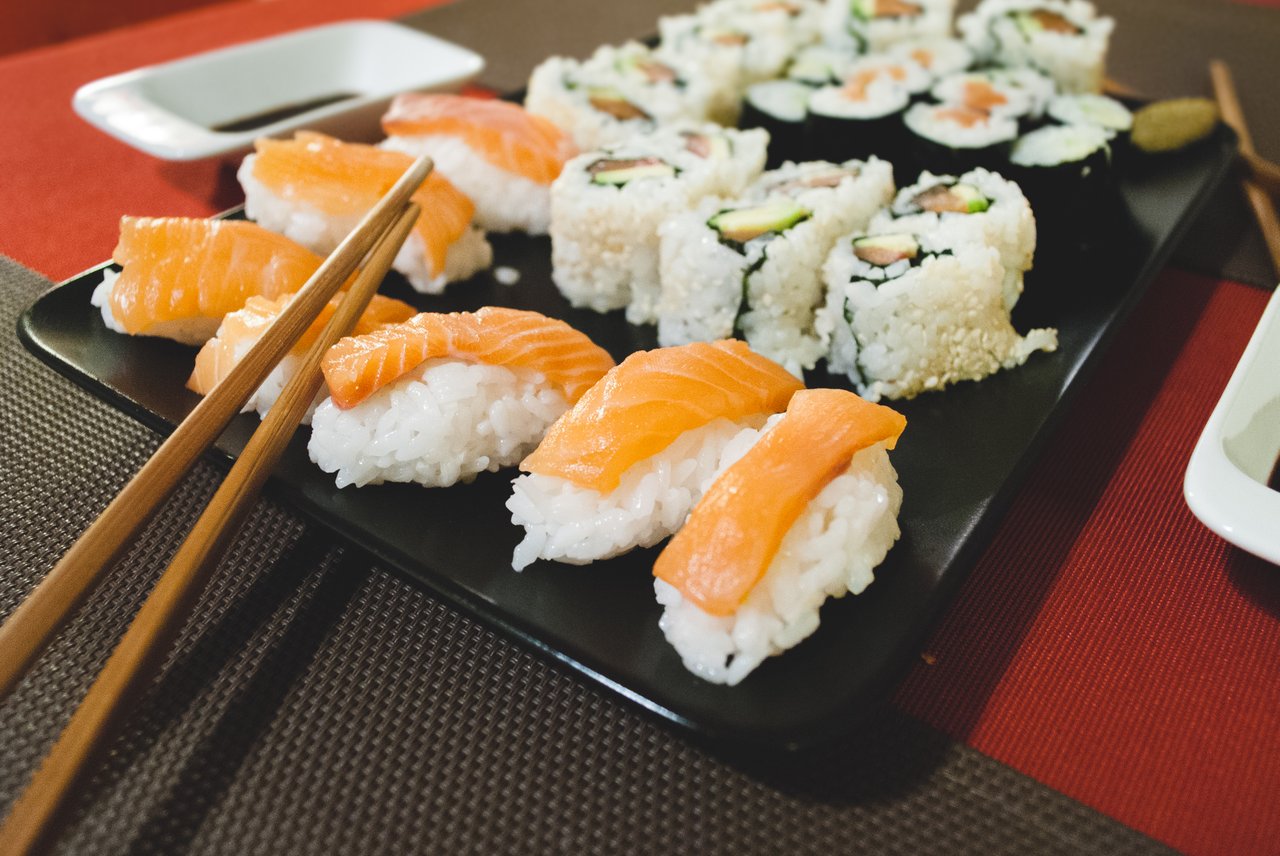
Brain Food: 9 Facts About Sushi
posted on
Sushi was only introduced to North America in the 1960s, but since then it’s taken the continent by storm, becoming a staple in many foodies’ diets. In the United States alone, the industry is worth over $2 billion a year. Craving a little sushi for lunch? While you wait for it to arrive, snack on these fun facts.
1. Sushi Originated in China

The origins of sushi are a little hazy, but the first written mention of a sushi-like food was in China, not Japan. A dictionary from fourth-century China describes the process of putting salted fish in cooked rice, which causes fermentation to begin. But nigiri sushi, as we know it today, was developed in Edo, Tokyo in the 1820s.
2. Sushi Restaurants Exist Because of an Earthquake
Sushi used to be considered snack food and was sold at roadside stands. But in 1923, the Great Kanto Earthquake struck Edo, resulting in a big drop in real estate prices. This meant sushi merchants could afford to move indoors.
3. Sushi Used to Come With Leaves, Not Plastic

Ever wondered why sushi comes with those little plastic green fences that separate your California roll from your dynamite roll? They’re there to prevent cross-contamination of the flavours, and they used to be made out of real plants. Before the invention of refrigerators, the leaves were also inserted in between the types of sushi to better preserve the fish.
4. The Emperor of Japan is Not Allowed to Eat Sushi
Okay, that would be way too strict; he can eat most kinds of sushi. But he’s not allowed to eat fugu, a poisonous pufferfish that’s popularly served as sashimi in Japan. It takes a very careful chef to prepare it safely, and there are between 20 and 44 poisonings every year.
5. Without Sushi, There’d Be No David Hasselhoff

In a bizarre interview with Adam Pockross, Hasselhoff explained his essence: “I think that without sushi there would be no David Hasselhoff, because sushi is like the perfect way of describing the insides of David Hasselhoff. He is like a protein, clean and easy. That’s how I feel about myself.”
6. Women Weren’t Allowed to Make Sushi
Japanese men didn’t let women make sushi because they thought their warmer hands would damage the fish. Men also thought women’s palates were unreliable at certain times of the month (yeah, those times). Today, the number of female sushi chefs is on the rise, but they still face challenges when breaking into the industry.
7. Being a Sushi Chef is Kind of a Big Deal

Making sushi seems pretty straightforward, right? Wrong. In Japan, sushi chef is a prestigious position that requires 10 years of training as an apprentice. Required skills include making perfect rice cakes that won’t fall apart when dipped in soy sauce, cooking and cleaning each kind of fish properly, and knowing the right balance of rice and vinegar for each roll.
8. The Priciest Sushi in the World is Made of Gold
In the Philippines, chef Angelito Araneta Jr. makes sushi wrapped in gold leaf, topped with pearls and a diamond. This dish will set you back about $2,000 for five pieces.
9. Sushi Can Be Made out of Anything

Spicy tuna rolls not cutting it for you anymore? Don’t worry, you’ve got options. Chefs around the world have taken it upon themselves to invent chicken and waffle sushi, sushi hamburgers and pizza sushi. For dessert, try some tiramisushi (tiramisu sushi) or peepshi (marshmallow peeps sushi).
Feeling peckish? Order sushi from a restaurant near you and have it delivered in a snap. If your sushi lunch leaves you feeling a bit lethargic, pep up afterwards with fun facts about coffee.
Filed Under: Foodee HQ